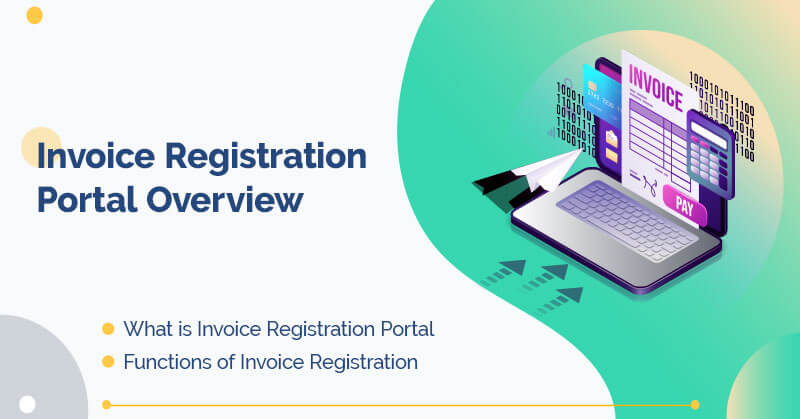Invoice Registration Portal Overview
As e-invoicing has already been implemented in India, so it is important for businesses to know the process of how invoices are electronically authenticated via the Invoice Registration Portal (IRP). So, in this blog, we will discuss the functions of IRP and how to enroll for the same.

What is Invoice Registration Portal (IRP)?
An Invoice Registration Portal (IRP) is a government portal through which a taxpayer can upload and get the invoice/credit note/debit note verified. Once, such documents are authenticated IRP assigns a unique invoice reference number (IRN) and signed QR code.
Functions of Invoice Registration Portal (IRP)
Here are the functions of the invoice registration portal (IRP)
1. Generating IRN
It is a myth that the taxpayer has to generate an invoice on IRP. The truth is the taxpayer needs to generate invoices on their ERP or accounting/billing software. Once they are generated, the taxpayer needs to upload them on the invoice registration portal (IRP). Then, the IRP validates the details of such invoices and generates IRN.
2. Generating QR codes
Once an invoice validates the details of an e-invoice IRP assigns IRN and signed QR code. This signed QR code consist of the following details:
- GSTIN of supplier and recipient
- Invoice number
- Invoice date
- Taxable value and the total value
- No. of line items
- HSN Code
- Hash or Invoice reference number
3. E-invoice via E-mail
Once an invoice is verified and signed it will be shared with the supplier and recipient on their registered e-mail id. This function will help them both to access the e-invoice on a real-time basis.
4. Keep a Check on Duplicity
As we already know that the details of the invoices generated from ERPs or accounting/billing software will be verified by the IRP. The IRP thoroughly checks the duplicity of the invoice details such as invoice number, invoice date, or other details by comparing them with the data stored in the central repository. In case if the IRP finds any duplicity of data, it is rejected showing the error message.
5. Offline Application
Invoice Registration Portal (IRP) offline application for scanning signed QR code will come in handy to both recipient and tax officer. Through this, they will be able to check whether the e-invoice issued is fake or not. However, complete details of an e-invoice can be checked after signing into the IRP.
6. GST and E-Way Bill System Integration
Once the e-invoice is issued by the invoice registration portal (IRP), the detail of the same will be shared with the GST and e-way bill system integration. This will lessen the compliance burden on the taxpayer as most of the details will get auto-drafted from details of e-invoices.
How to Enroll in E-Invoicing System?
There are different ways through which one can adhere to the e-invoicing provisions. Here are the ways through which one can enroll for e-invoicing system:
- Web-based
- API based
- SMS based
- Mobile app-based
- Offline tool based
- GST Suvidha Provider (GSP)
- Application Service Provider (ASP)
How Can GSTrobo® Help you?
GSTrobo® a division of Binary Semantics is one of the leading ASP- GSP who provides industry-leading GST compliance software such as GST, e-way bill, and e-invoicing software. These solutions not only seamlessly integrate with all the ERPs but also automates most of your GST compliance.
